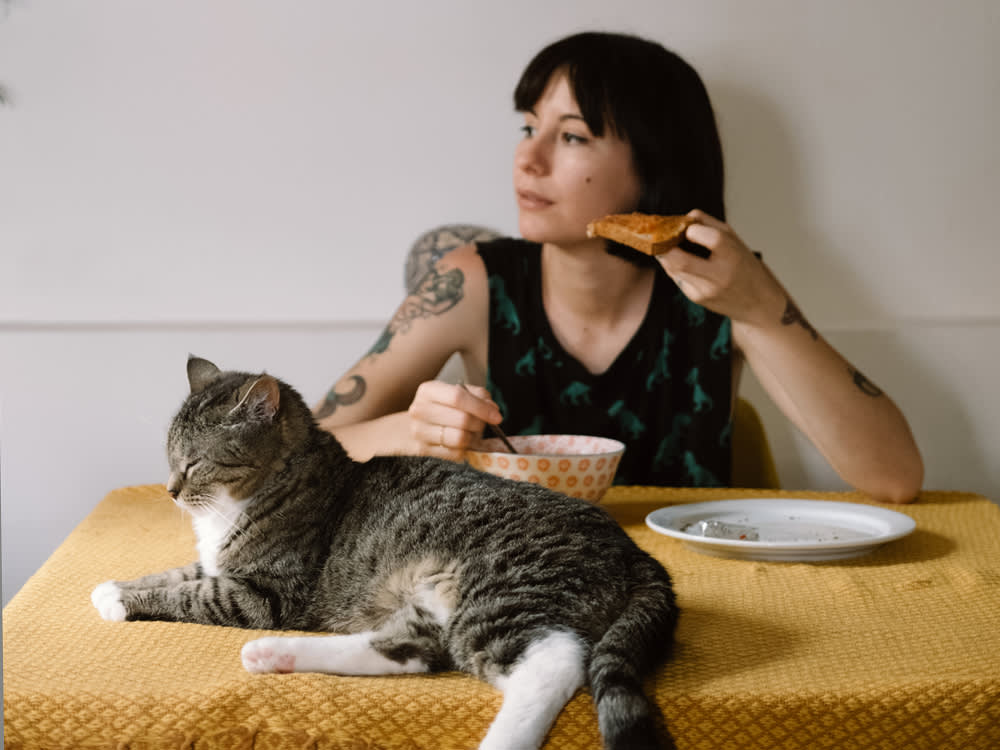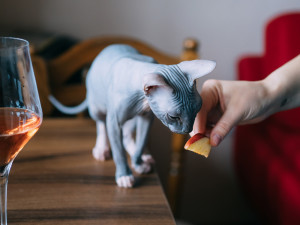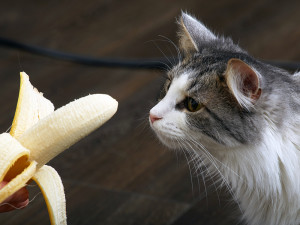Can Cats Eat Peanut Butter?
The sweet and salty treat is okay in moderation.

share article
You slather it on toast, add it to smoothies, and use it as the main ingredient in homemade dog treats. Your feline friend might like a sweet spoonful, too.
Is Peanut Butter Good for Cats?
Peanut butter is packed with protein (and tastes great) and is often added to treats or used to hide medications, according to Dr. Maryanne Murphy, clinical assistant professor of nutrition at the University of Tennessee. “Cats do fine with peanut butter,” she adds.
So, Why Shouldn’t Cats Eat Peanut Butter?
Peanut butter is safe for some cats but there are still several good reasons to find another go-to treat for your feline friends.
The oil and fat that give peanut butter its flavor are high in calories and could cause them to pack on the pounds; for this reason, it’s best to limit quantities, but “a small amount to give a cat medication or a little treat is just fine,” Dr. Murphy says.
Peanut butter also contains a lot of salt. Too much sodium could lead to vomitingopens in a new tab, diarrheaopens in a new tab or excessive thirst and, in severe cases, heart disease.
Peanut butter may be a choking hazard due to its thick consistency.
Some cats have nut allergies, including allergies to peanuts. It’s rare but it’s also possible and, in severe cases, it can cause a life-threatening allergic reaction called anaphylaxis.
Peanut butter can contain an artificial sweetener called xylitol that is toxic to dogsopens in a new tab. “A detrimental link in cats has not been shown,” says Dr. Murphy. “Out of an abundance of caution, I would still recommend against using a xylitol-containing product with cats, and would still call your veterinarian or animal poison control if your cat consumes [peanut butter that contains xylitol].”
How to Add Peanut Butter to Your Cat’s Diet
You can hide pills in a small glob of peanut butter, offer a few licks off of the spoon, or use it as a sweet and salty ingredient in homemade treats. Below, a recipe for pet-safe peanut butter treats.

Jodi Helmer
Jodi Helmer is a North Carolina-based freelance writer who shares her home with an embarrassing number of rescue dogs and relies on four feral cats to patrol the barn. When she isn’t refilling food and water dishes, Jodi writes about animals for Scientific American, Sierra, WebMD, AKC Family Dog, Living the Country Life, and Out Here.
Related articles
![Cat eating from a plate of raspberries and blueberries]() opens in a new tab
opens in a new tabCan Cats Snack on Blueberries?
Go ahead and serve up the superfood — with a couple caveats.
![A gray Sphynx cat sniffing an apple slice held out by her owner while standing on a table next to a glass of wine]() opens in a new tab
opens in a new tabCan Cats Eat Apples?
Yes, but the fruit might not hold much a-peel.
![A cat staring at a peeled banana]() opens in a new tab
opens in a new tabB-A-N-A-N-A-S: Can Cats Eat Them?
Gwen Stefani taught us how to spell it, but can we feed it to our cats?


